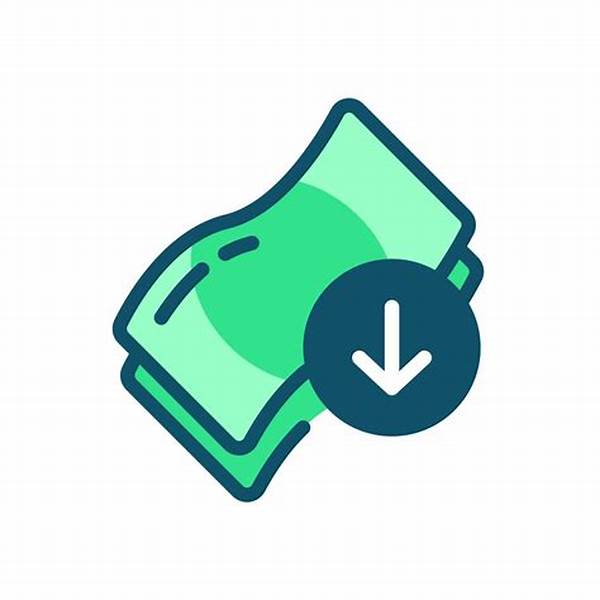Graphic design is an essential component of any creative project, whether for personal or professional purposes. However, high-quality design tools and assets can often come with a hefty price tag. Fortunately, there are numerous low-cost graphic design resources available that can help you maintain excellent quality without breaking the bank. These resources range from software and templates to tutorials and asset libraries, ideal for both beginners and seasoned designers looking to optimize their budgets.
Read Now : Artistic Collaboration Through Technology
Affordable Tools for Designers
When seeking low-cost graphic design resources, it’s important to first consider the tools you’re using. Adobe Creative Cloud might be the industry standard, but there are plenty of budget-friendly alternatives available. Tools like Canva, GIMP, and Inkscape offer accessible platforms with comprehensive features at little to no cost. Furthermore, many of these tools provide extensive libraries of templates and design elements, helping you create stunning visuals without additional expenses. These low-cost graphic design resources are invaluable for freelancers, small businesses, or anyone looking to experiment with design without a significant financial investment.
Another great resource for affordable design tools is open-source software, which offers powerful features comparable to premium tools. Blender, for example, is a well-known free tool for 3D design and animation. Open-source options benefit from community support and constant updates, making them reliable low-cost graphic design resources for any designer. By leveraging such tools, you can access a broad range of functionalities while remaining within budgetary constraints.
Essential Asset Libraries
Asset libraries form the backbone of any design project, offering a wealth of resources such as images, fonts, icons, and more. At a fraction of the cost—or sometimes even for free—platforms like Unsplash and Pexels provide high-quality images that can enrich your designs. Similarly, Google Fonts and Font Squirrel offer extensive collections of typography resources at no cost, allowing for creative flexibility. These low-cost graphic design resources ensure you have a vast range of elements at your disposal, facilitating creativity without financial strain.
Online marketplaces for design assets, like Creative Market and Envato Elements, offer subscription models that provide access to premium resources at reduced rates. These platforms are particularly useful for acquiring unique templates, stock imagery, and even education materials. With a modest budget, you can unlock countless low-cost graphic design resources that will suit various projects and styles.
Tutorials and Learning Platforms
For both novices and experienced designers looking to broaden their skills, educational resources play a crucial role. Platforms like Skillshare and Udemy provide numerous affordable courses that cover a wide array of design topics, from fundamental principles to advanced techniques. Websites such as YouTube host countless free tutorials, offering valuable insights into the practical applications of design concepts. By utilizing these low-cost graphic design resources, you can enhance your proficiency and keep up-to-date with the latest design trends.
Forums and online communities are also invaluable low-cost graphic design resources, where designers can share tips, critique work, and collaborate on projects. Platforms like Reddit and Behance allow for networking and learning opportunities, giving you access to an array of creative minds and fresh perspectives. These resources help not only in skill acquisition but also in expanding your professional network without exorbitant costs.
Tips for Accessing Low-Cost Resources
1. Explore open-source software to find powerful, free design tools.
2. Use free image libraries like Unsplash for high-quality visuals.
3. Consider subscription services that offer premium assets at reduced rates.
4. Take advantage of free online tutorials and courses to improve skills.
5. Join design forums for networking and resource sharing.
6. Regularly check for sales and discounts on popular design platforms.
Read Now : Monetizing Art Through Social Media
7. Utilize free trials offered by professional design software.
8. Incorporate public domain and creative commons resources in your projects.
9. Engage with social media design communities for exclusive insights.
10. Subscribe to design blogs and newsletters for updates on free resources.
Exploring Membership Perks
Membership programs offered by design platforms can often unlock an impressive array of resources at a low cost. For a manageable monthly or yearly fee, you can gain access to extensive libraries of templates, stock photos, and other assets that would otherwise be costly if purchased individually. These memberships often come with the additional benefit of regular updates and new content, keeping your resources fresh and current. Furthermore, it is not uncommon for such platforms to offer discounts on courses, software, and other products, further increasing the value of their memberships.
Investing in a membership with a credible design resource platform can augment your toolkit substantially. Low-cost graphic design resources accessed through membership programs can greatly enhance the quality and quantity of assets available to you, enabling more creative freedom and flexibility in your projects. The key is to choose a membership that aligns with your specific needs and field of work. This strategic investment not only saves money in the long run but also keeps you competitive in the fast-paced world of design.
Community and Networking Opportunities
Participating in online design communities can provide numerous benefits, not least of which are the connections and knowledge amassed from fellow designers. Platforms like Behance and Dribbble serve as social networks for creatives, where you can showcase your work, discuss design challenges, and learn from others. Engaging in these communities can uncover low-cost graphic design resources, such as group discounts and shared libraries. These environments foster collaboration and feedback, essential for growth and innovation in your design work.
Moreover, attending webinars and virtual design events offers another dimension of community engagement. Many of these events are free or low-cost, providing opportunities to learn from industry leaders, participate in workshops, and network with peers globally. Such events can also introduce you to new tools and resources that align with budget-conscious needs. By tapping into these community and networking opportunities, you enrich your design experience and ensure access to a wealth of low-cost graphic design resources.
Summary of Key Points
Low-cost graphic design resources are vital for anyone involved in creative pursuits, offering opportunities to maintain high standards without incurring substantial costs. By strategically choosing affordable tools and assets, such as open-source software and free image libraries, designers can access necessary resources without compromising quality. These alternatives provide a robust collection of functionalities and inspire innovation within budgetary limits.
Equally important are the educational and community components available to designers. Cost-effective tutorials, online courses, and design forums offer avenues for skill enhancement and networking. These resources not only expand a designer’s technical skills but also introduce them to new ideas and perspectives, keeping their work relevant and dynamic. By employing a combination of these low-cost graphic design resources, designers can ensure versatility and productivity in their craft.



